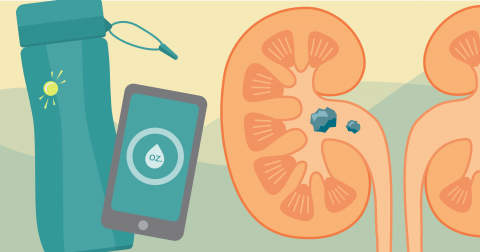
The prevalence of kidney stones has steadily increased in the United States. According to the National Kidney Foundation, more than half a million people go to the emergency room each year for kidney stone problems, a number that has increased threefold in the last 30 years.
The most common type of kidney stones can be prevented with proper fluid intake. The National Institutes of Health and the National Institute of Diabetes and Digestive and Kidney Diseases have funded a nationwide study, the Prevention of Urinary Stones with Hydration (PUSH) trial, in hopes of determining whether smart technology can help patients take their fluid intake seriously and prevent painful urinary stone disease.
Charles Scales Jr., MD, Associate Professor of Surgery, is one of the PUSH study’s principal investigators. Over the next three years, the $1.3 million dollar study will enroll 1,642 patients at 4 different sites across the country. The primary aim is to determine whether providing patients with a smart water bottle that tracks their fluid intake through a connected phone app will encourage patients to drink enough water to expel the recommended 2.5 liters of urine per day. The smart bottle comes equipped with an indicator light, which reminds users to drink more water and congratulates them at the end of the day for meeting their intake goal.
“If you have experienced kidney stones in the past, you’re at a high risk of getting them again,” says Dr. Scales. “Experts agree that one of the best ways to reduce your risk is to drink more water, but it’s not always easy to make changes to your regular lifestyle habits and maintain them over time. The PUSH study will investigate specific ways to encourage, motivate, and support people to achieve their fluid intake goals for the long term.”
Participants in the study must be 12 years of age or older, have had one kidney stone in the last three years, have low urine output over a measured 24-hour period, and own a smartphone.
To learn more about the PUSH Study, watch the video below from the Duke Clinical Research Institute.